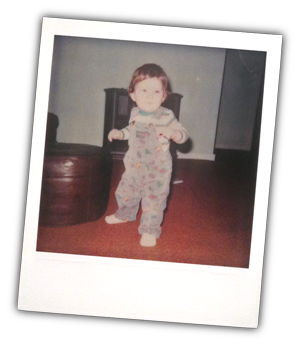Lately I’ve had the opportunity to speak with people from around the world, and their thoughts and feelings about America – combined with the events of the last few months – have made me pause and think about how I think of myself as an American.
I feel really fortunate to live in the United States. Americans take so much for granted – from clean water to the availability of, well, everything. The past few months have been the first time most of us have experienced any kind of supply scarcity in our lives. And even in a time of crisis, we’re still able to access some of the best healthcare in the world, have nearly ubiquitous access to technology that connects us to anything or anyone, and feel safe in our communities.
Of course, that rosy picture of the world’s only superpower doesn’t tell the whole story. Millions of Americans don’t have the money to access the healthcare they need. Technology divides us as much as it brings us together. And some people in our communities rightly feel more threatened than protected by those tasked with enforcing the laws in our cities and towns.
This is nothing new. Peel back the gilded stories of America’s history in textbooks and you’ll find layers upon layers of cringe-worthy details. We’ve been destroying people and populations since the country was founded – and even before that (looking at you, Columbus).
But what inspires me about America to this day is that its citizens hold the power to determine what happens in this country. First and foremost, we decide who should be in power. We can effect change if we speak up and rally together. And yes, the methods by which we choose our elected officials can improve, but there’s even progress on that; I hope we can expand ranked choice voting beyond the borders of Maine, for example.
We also can’t take for granted the power to speak and protest. It’s one of the first rights enshrined in the Constitution to Americans. The right to speak, assemble, and demonstrate without the fear of harm or retribution must be protected at all costs, because that’s what makes and keeps us free.
I’ve been thinking a lot about Lee Greenwood’s “God Bless the U.S.A.” lately. It’s widely considered one of the most patriotic American songs, but the first couple of lines in the chorus are what’s been stuck in my head:
And I’m proud to be an American
Where at least I know I’m free
“At least I know I’m free.” Freedom is amazing, of course, but that “at least” is a pretty mediocre tone for a patriotic song.
Even the Founders knew this process would take time. The preamble of the Constitution makes it clear:
We the People of the United States, in Order to form a more perfect Union, establish Justice, insure domestic Tranquility, provide for the common defense, promote the general Welfare, and secure the Blessings of Liberty to ourselves and our Posterity, do ordain and establish this Constitution for the United States of America.
They knew America would be “a more perfect union”, not “a perfect union”. America is still a relatively young country, and in many ways we’re still learning. Hopefully.
Personally, I like to think we’re moving in the right direction. Change takes time – often a frustrating amount of time – but we’ve seen progress in some really critical areas over the last years and decades. It takes work. It’s exhausting. But we have to keep going. It’s our duty as Americans. It’s what the Founders wanted.
The arc of the moral universe is long, but it bends toward justice.
– Martin Luther King, Jr.
The Constitution is a document driven by unity. And while the Bill of Rights outlines individual rights, they’re all outlined in order to maintain the union. This country is about more than any single person. It’s a vision of improvement and refinement. It’s a vision of progress.
To be honest, there are times when I can’t agree with Greenwood about being “proud to be an American”. There’s a lot in our history – including our recent history – that doesn’t make me proud of my country. But that unrelenting quest in the direction of a more perfect union is why I feel fortunate to call myself an American. We’re always moving forward, even if that arc is maddeningly long.
 When I received my first digital camera as a Christmas gift in 1999, I had no idea about the journey I was starting. I’d always loved photography; I developed my own black and white prints at a summer day camp in grade school, and my mom loves to remind me that she captured my first steps on film because I was trying to grab the camera out of her hand. But digital was what made my interest explode. I spent years traveling around Maine and capturing the natural beauty of the state. In college I discovered the rush of capturing performances – concerts, dance, and theatre – and I’ve been fortunate enough to have full access to shoot great events like the
When I received my first digital camera as a Christmas gift in 1999, I had no idea about the journey I was starting. I’d always loved photography; I developed my own black and white prints at a summer day camp in grade school, and my mom loves to remind me that she captured my first steps on film because I was trying to grab the camera out of her hand. But digital was what made my interest explode. I spent years traveling around Maine and capturing the natural beauty of the state. In college I discovered the rush of capturing performances – concerts, dance, and theatre – and I’ve been fortunate enough to have full access to shoot great events like the